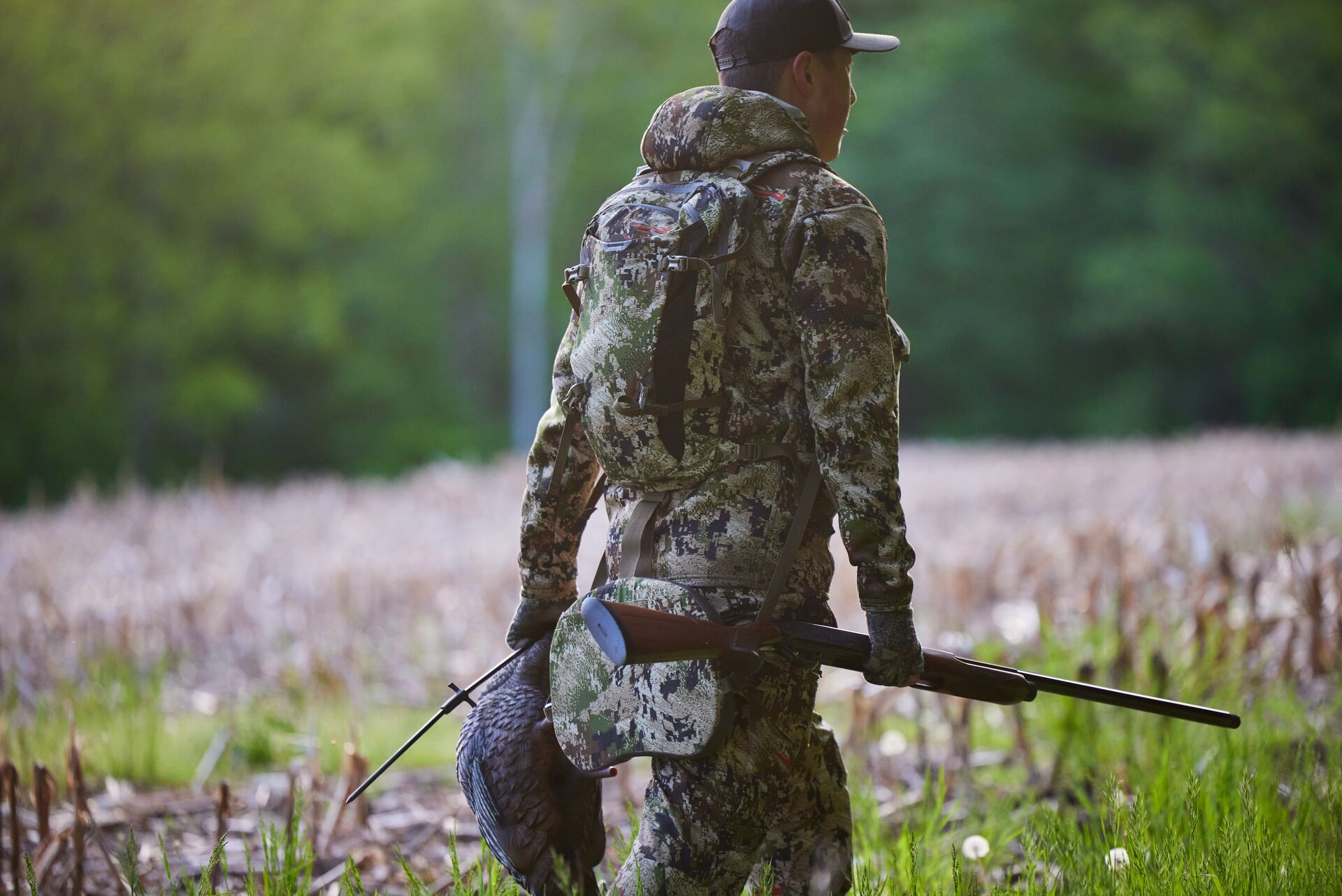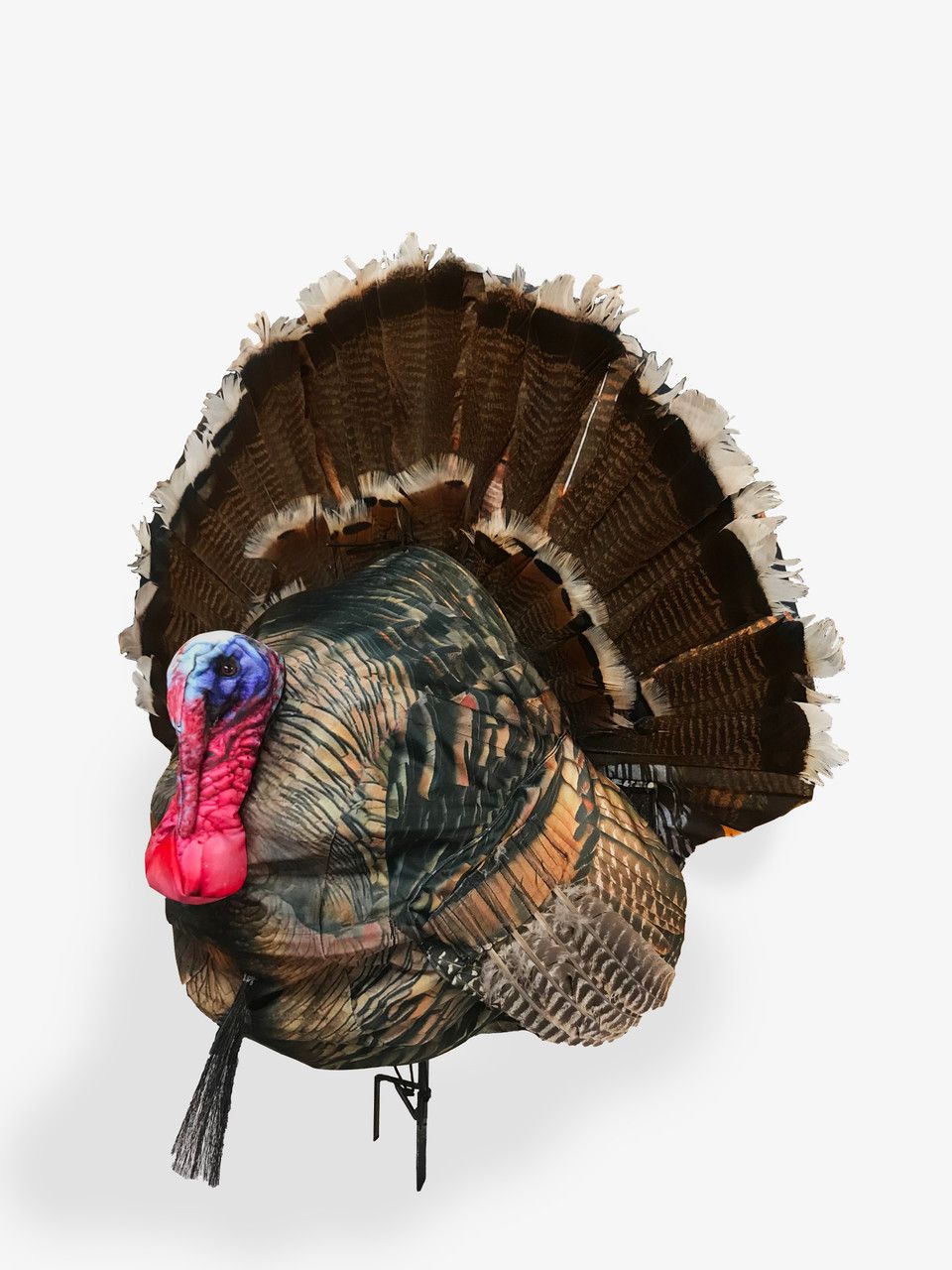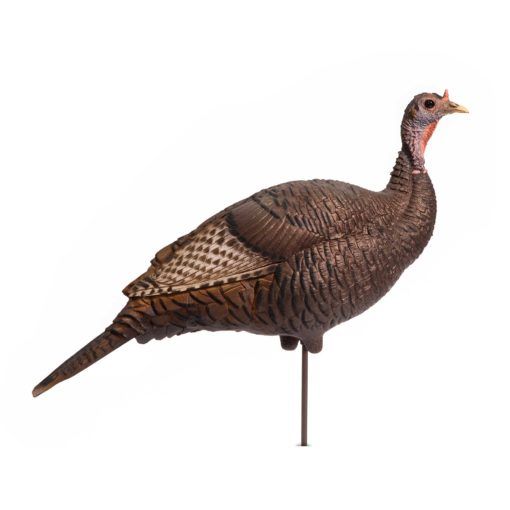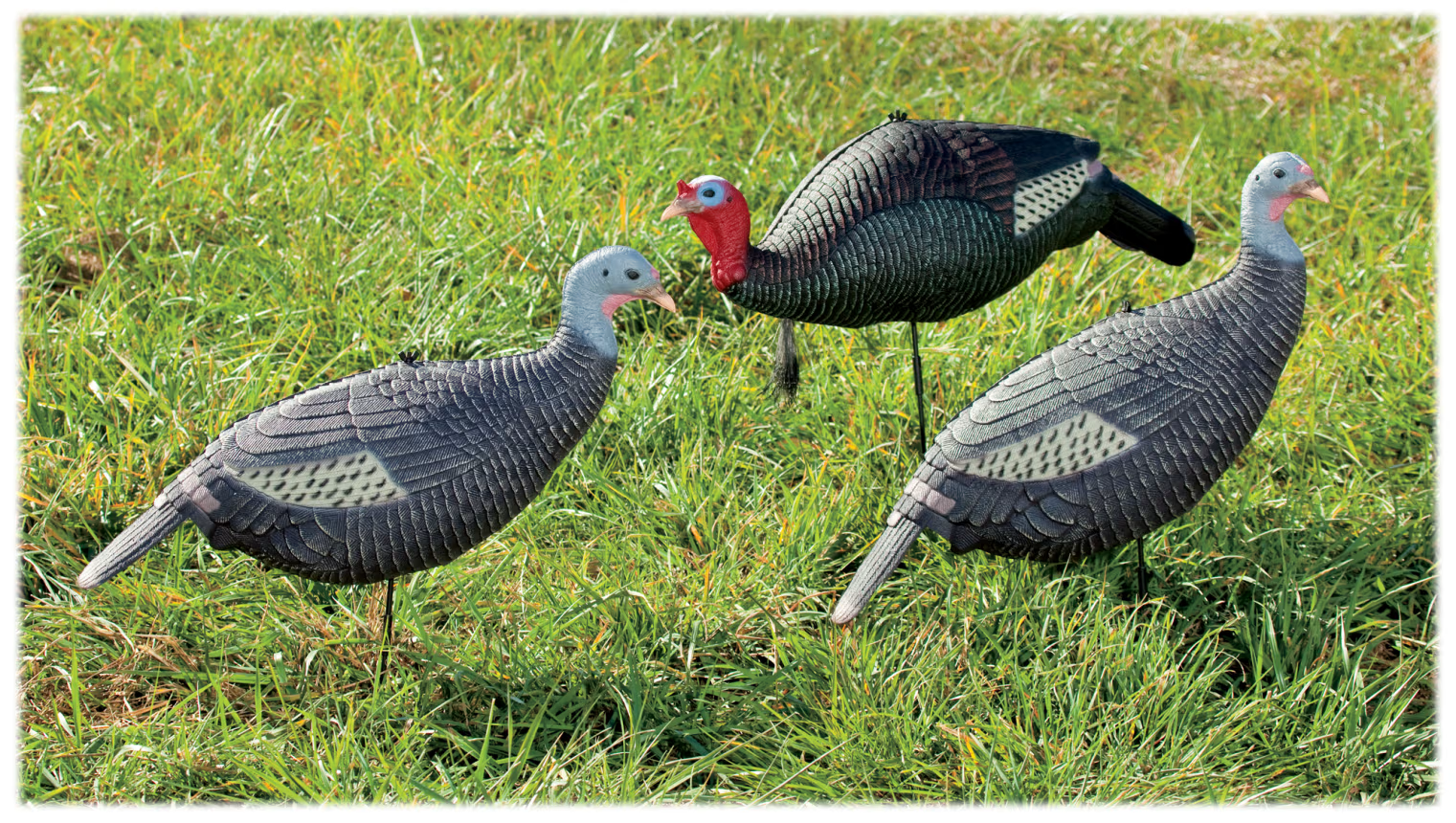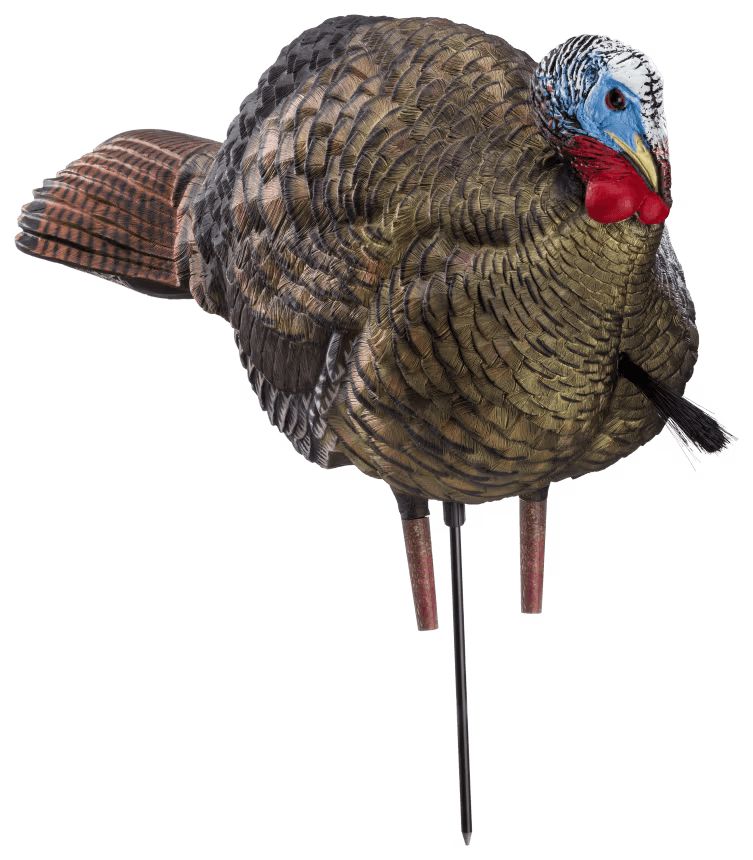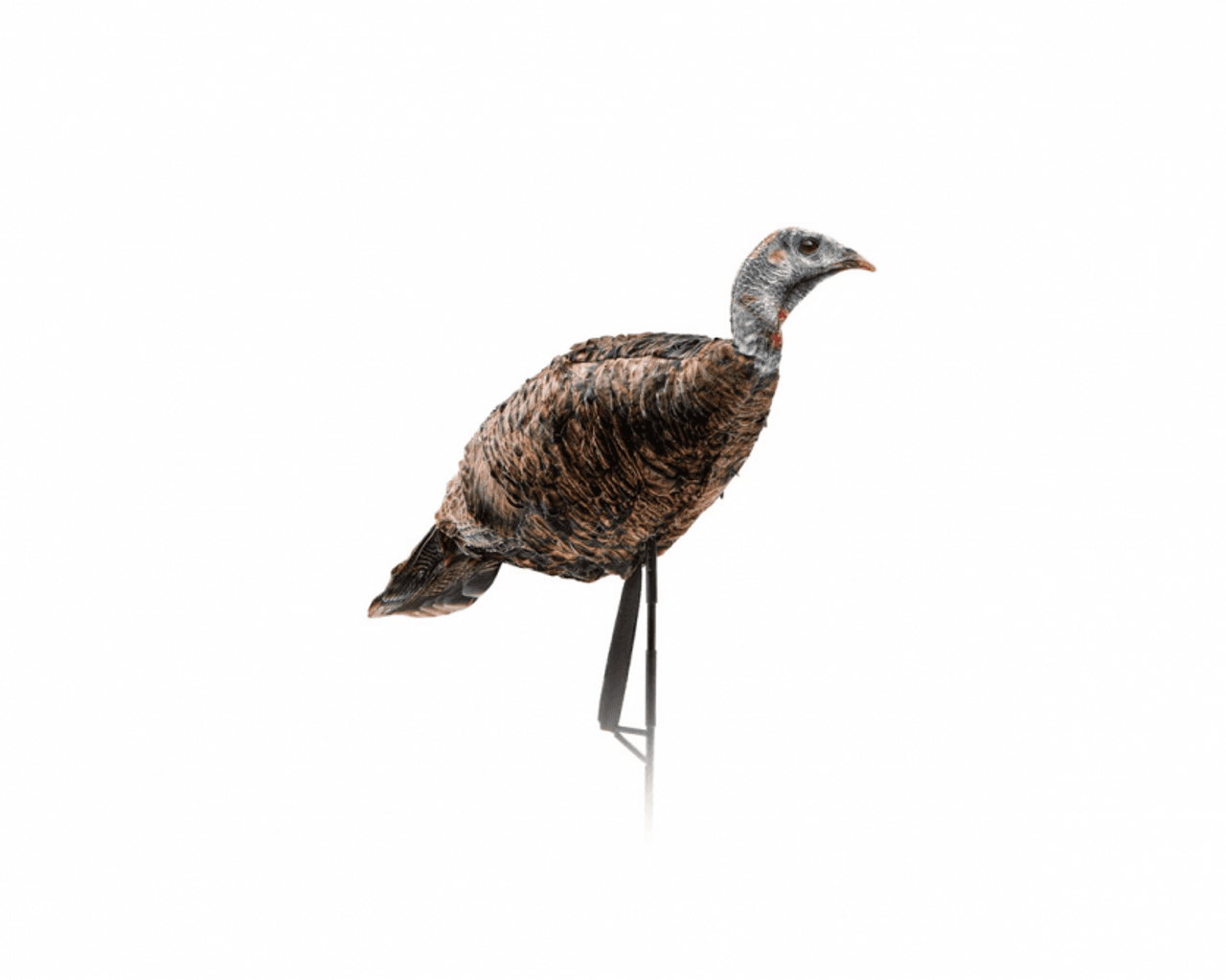Turkeys, with their elusive nature, pose a significant challenge to hunters. To overcome this, hunters employ a range of tactics, from natural camouflage to cutting-edge calling devices and decoys, all to increase their chances of a successful hunt before the season's end.
If you need to update your decoys for the 2024 season or are starting to expand your kit and add some new decoys to your repertoire, look at our breakdown of the best turkey decoys for 2024.
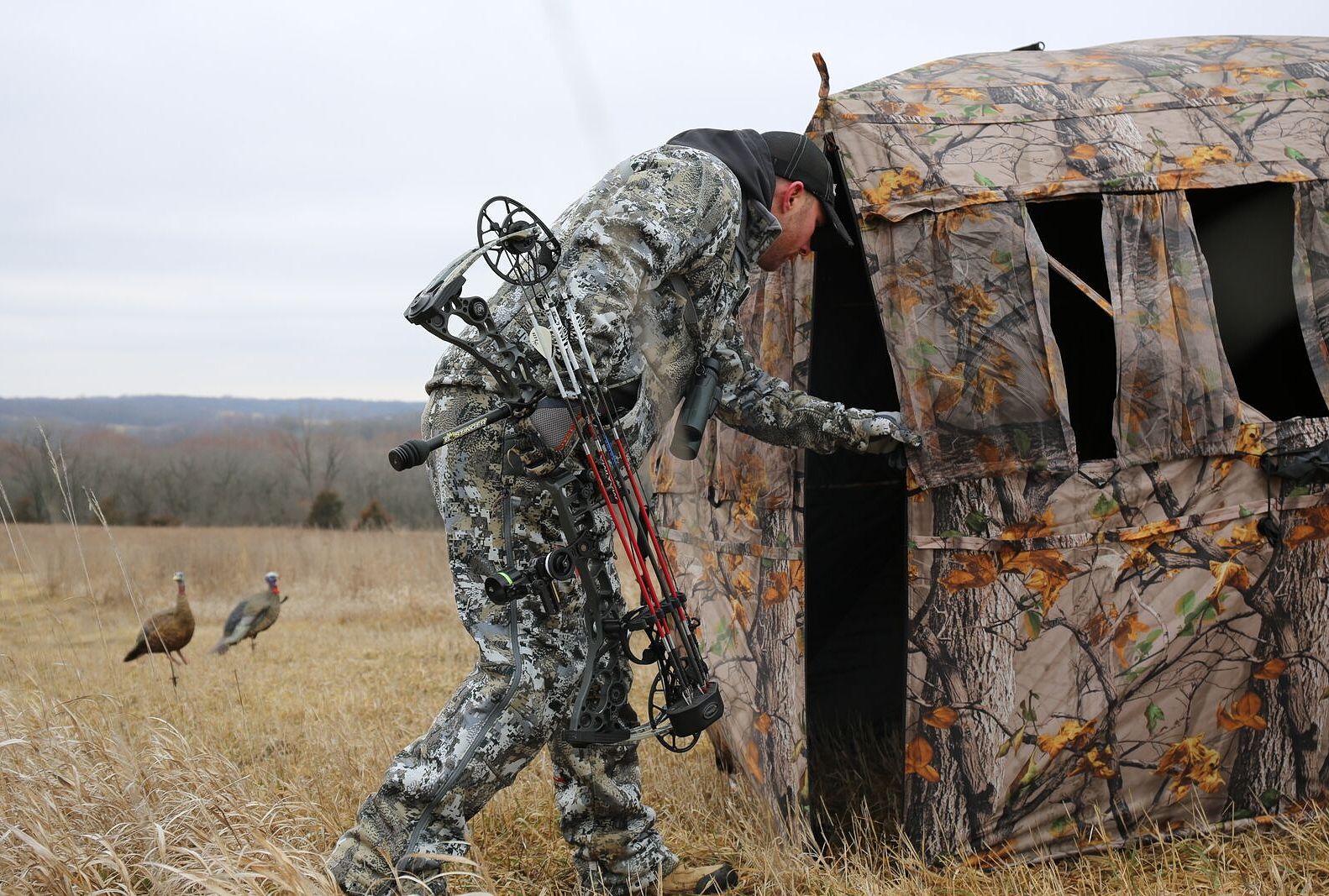
What are the Types of Turkey Decoys?
The range of turkey decoys allows hunters to create realistic turkey scenes based on the behavior of the birds during that period in the season.
Here are some of the most common decoys used by hunters of all skill levels:
- Mature Tom: These decoys are often available in full and half strut positions and are used to challenge and lure in other toms.
- Hens: Perhaps the most common decoy type, hens are a popular go-to option for drawing in jakes and toms that are conflict-averse if they can't see any dominant birds nearby when mating.
- Hen and Jake: This combination triggers a dominant tom into action. Seeing a younger bird (a jake) with one of his ladies can create a swift, aggressive response.
Regarding the construction of decoys, you can have differing designs, including collapsible, solid, motion, or inflatable.
When To Use Turkey Decoys
Seasonality impacts turkey habits. As you move through the season, different decoys and decoy combinations should be deployed for the greatest impact. There's no one best turkey decoy but the right combination for the right moment.
Here are some season considerations to help you set up your decoy placement for a winning season.
Early Season
Early-season male gobblers are combative and testosterone-driven, meaning jealousy over mating and the desire to establish dominance drives much of their interactions.
Setting up a jake near a hen to provoke jealousy or placing a single jake in an aggressive posture can both have a high response rate.
Mid-Season
During the mid-season, mating is in full swing, and social hierarchies are being formed based on dominance.
A lone hen can draw in a tom who struggled to mate earlier in the season and is looking for a non-confrontational interaction. Similarly, a small flock of hens can draw a more confident bird closer – just remember spacing, movement, and naturalism when placing more than one decoy.
Late Season
Late season means the birds are less combative, as hierarchies have been formed, and breeding is coming to an end.
Consider a solo hen or jake to target mature gobblers, and remember that hens will most likely be resting during this time. Less is more in the late season.
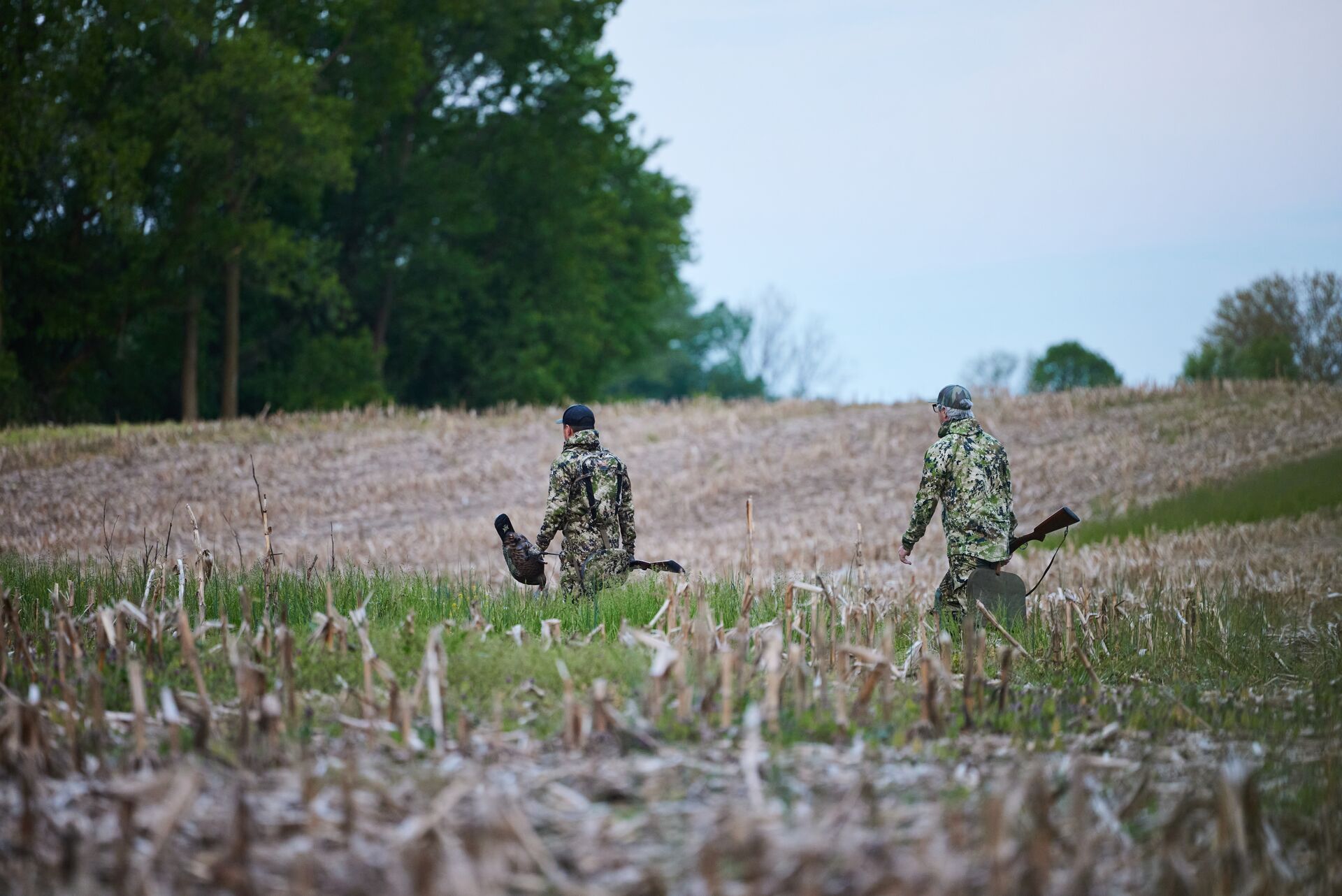
Hunter Tips and Advice for Using Decoys
We asked our friend and HuntWise Field Team hunter Travis Hawkins about using turkey decoys successfully when he hunts. Here's what he recommends:
"Turkey decoys come in all sorts of shapes, sizes, and prices. Most hunters use hen decoys, but you can also toss in a jake or even a strutting tom, depending on what you observe in the field. I've also taken note of companies making a breeding pair decoy.
While we've recommended some good decoys to consider, in my opinion, any decoy can fool a turkey if used correctly. I'm a minimalist hunter; the less bulk and weight, the better.
Personally, I love the inflatable Cherokee Sports decoys. They are reasonably priced, very realistic, fit into your cargo pants pockets, and have lasted me a good 3-4 seasons. Another favorite of mine is the Strutting Tom made by Flextime. I've combined a real Tom tail fan and wings to mine for that added realism."
Using Decoys Can Be Tricky
Travis continues:
"Using decoys can be tricky and may require a bit of skill to entice that big tom to close the distance. For relatively thick timber hunting, I never use a decoy. However, if I find myself in more open timber, I'll normally use a single hen decoy.
For fields, you can use a single hen or bring out the whole army! If I know there is a single tom looking for some magic, then a single hen is usually my pick. If more than one Tom and several hens are there, I like to deploy the whole army.
When setting up several decoys, a bit of skill is required. I've found that a sole tom/strutter decoy with a few hens works great; placing a few jake decoys off to the side works even better. You can also replace the tom/strutter with a Jake decoy. That has proven to make those old toms angry enough to come in looking for a fight.
Reaping turkeys is known as hiding behind a strutting tom decoy to deceive a tom into believing that you're a real bird. A person can get extremely close to turkeys if done properly, but it requires some patience and proper concealment. I have used this trick in the past to get around groups of jakes and hens that were in a field. I also harvested a mature Tom a few years ago using this technique.
The best advice that I can give is to take these tips and put them to use. It's often about trial and error. Find out what went right and what went wrong in each situation, and use that to your advantage on your next hunt. "
The Top 5 Turkey Decoys for 2024
So, which decoys should you add to your turkey hunting gear? We've rounded up the top five turkey decoys this season to help you bag a big one.
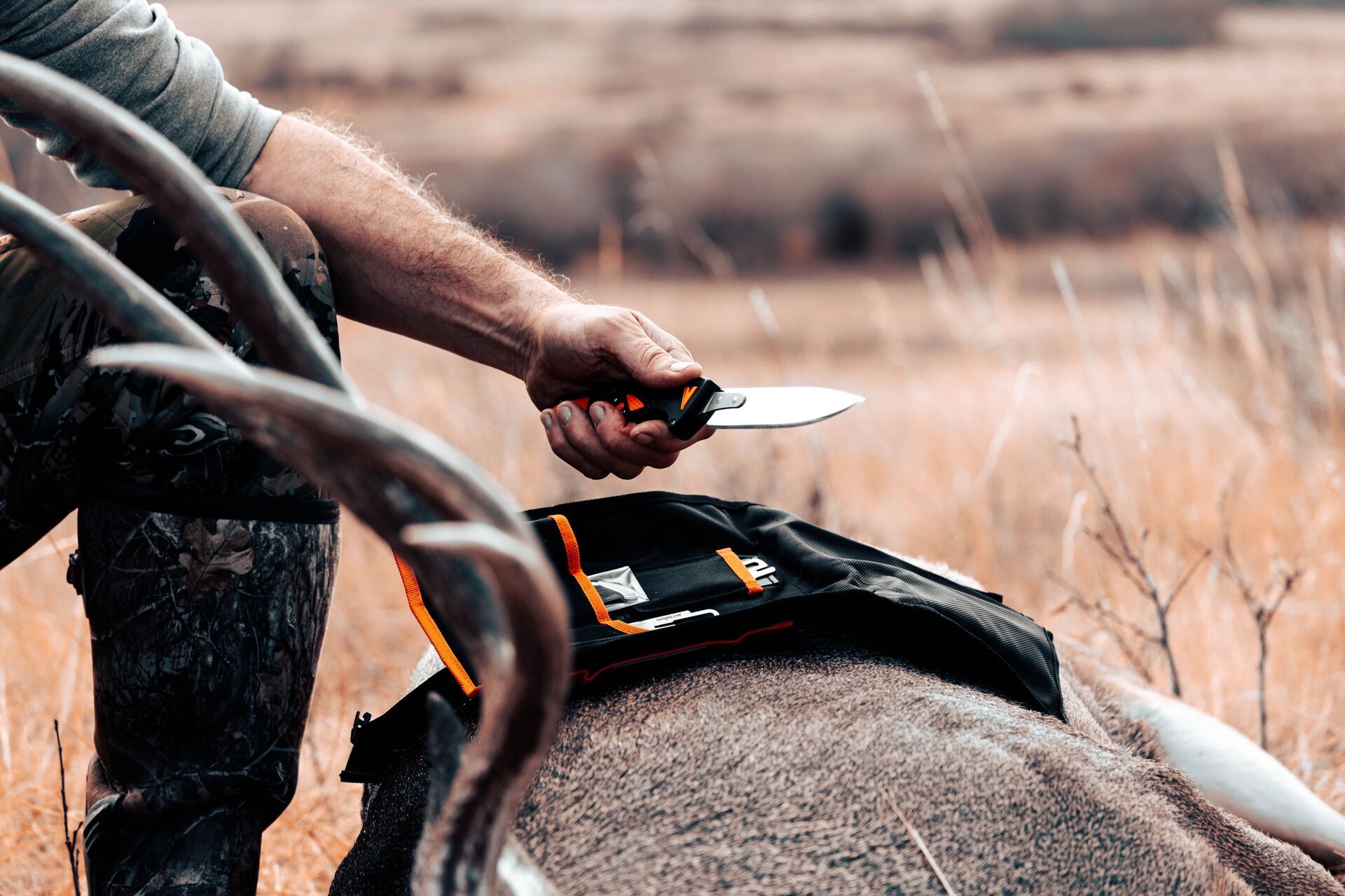
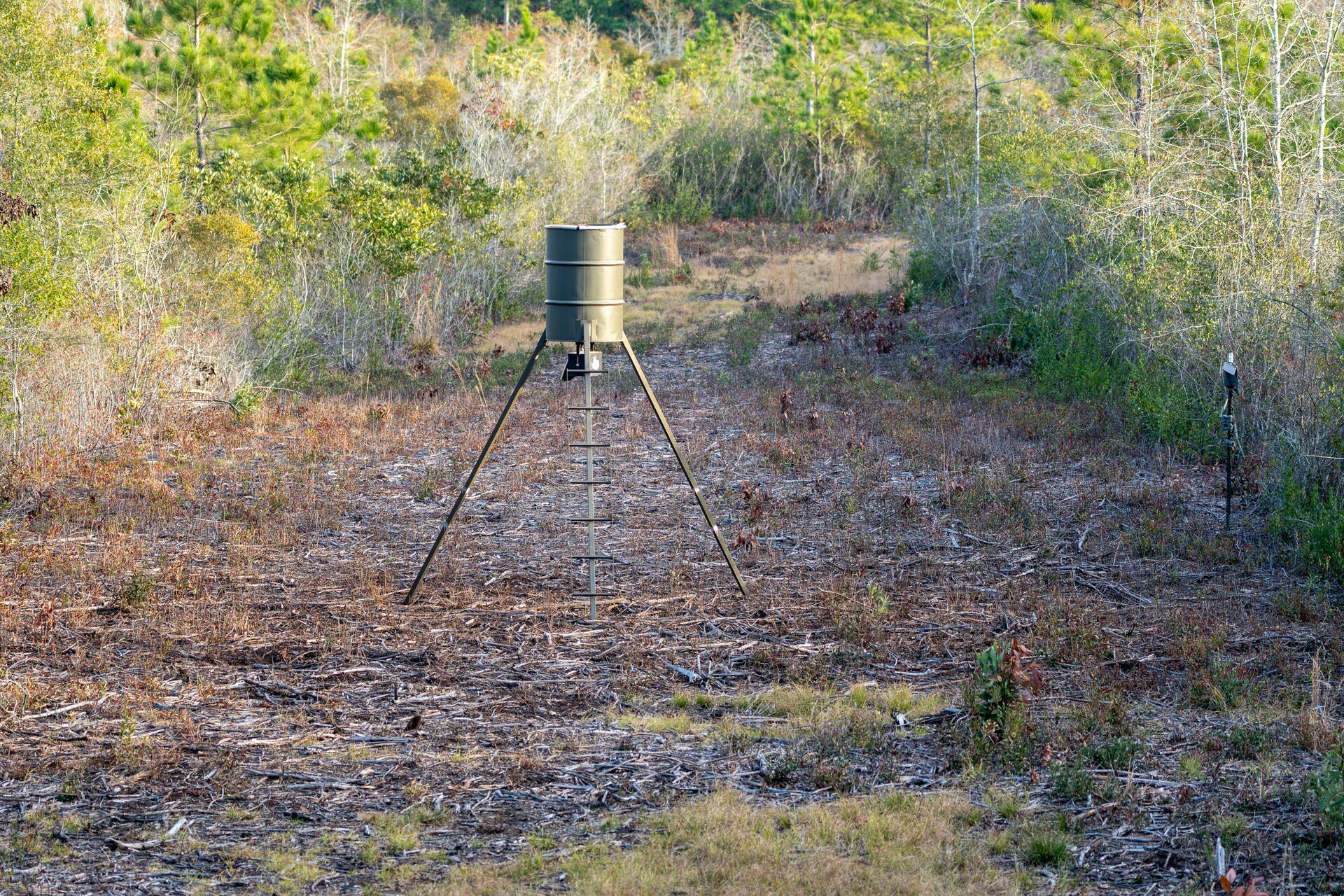
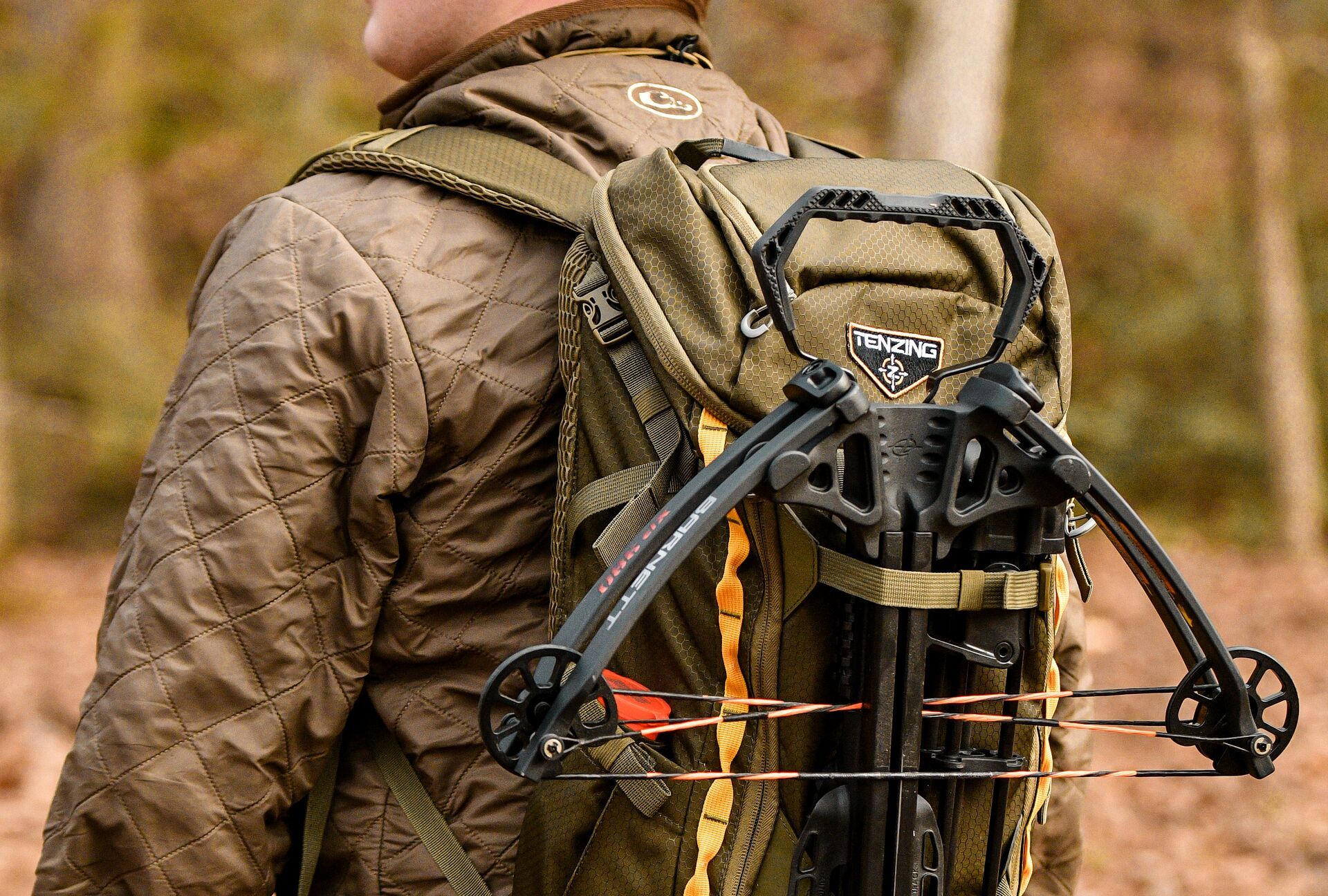
 Gear
Gear Gear
Gear Gear
Gear